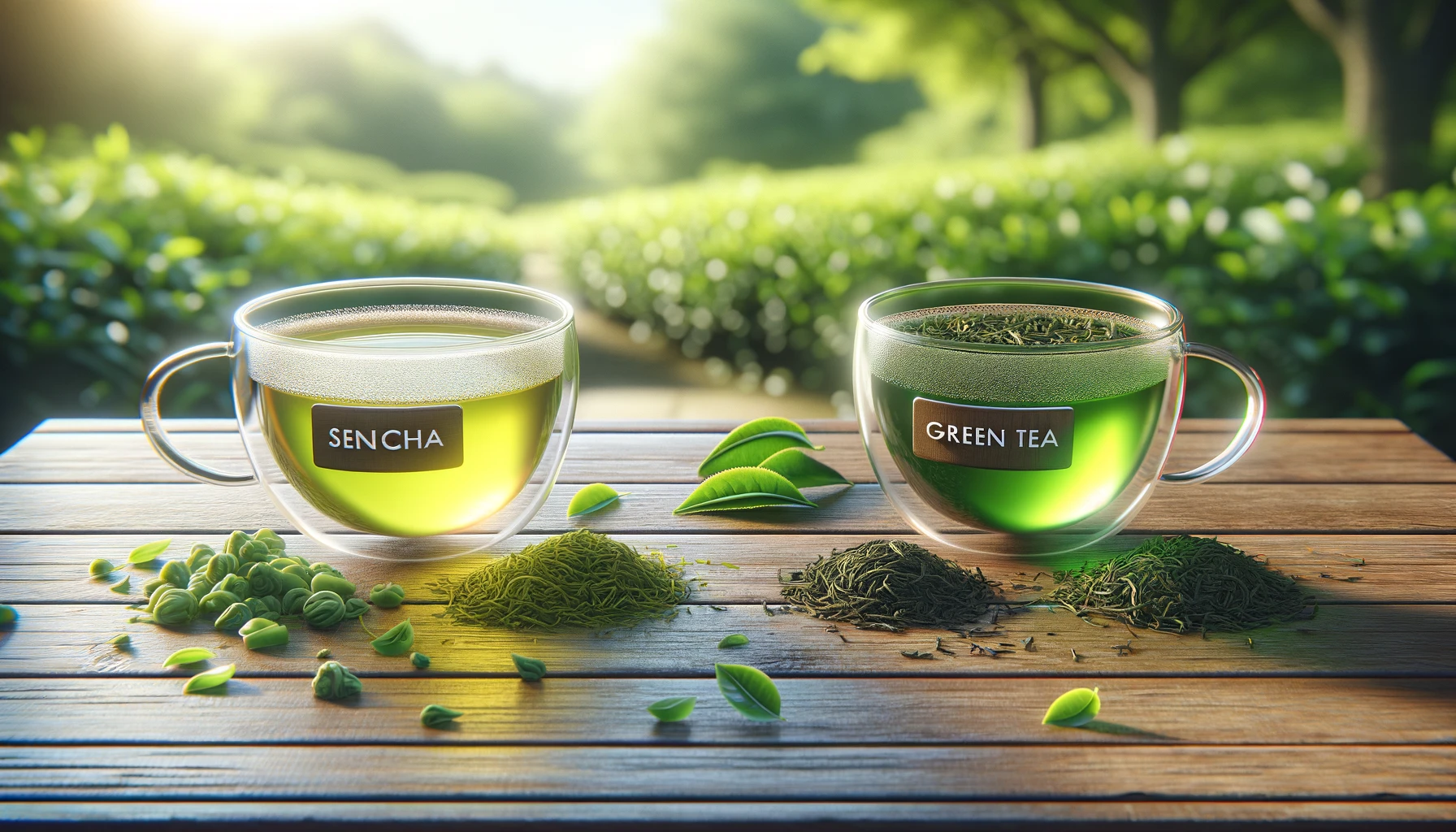Today, I’d like to talk to you about “Green Tea Vs. Sencha Tea: What Are The Differences?”. Sencha occupies a distinguished position within the green tea category in the lively domain of tea, where every type conveys a tale of heritage, culture, and exceptional skill. Originating from the picturesque landscapes of Japan, Sencha embodies the rich legacy and meticulous practices of Japanese tea cultivation. When you set out to comprehend the essence of Sencha and green tea, you will uncover the subtle nuances that make each sip a sensory pleasure and a tribute to nature’s finest gifts.
Sencha tea transcends being just a beverage; it reflects centuries-old Japanese expertise in tea cultivation. The process starts with carefully selecting tea leaves cultivated in Japan’s lush, green regions. These leaves are exposed to direct sunlight, enhancing their flavor and imparting a distinct character not found in other green teas. The harvested leaves undergo a precise steaming process, which halts oxidation and preserves their vibrant green color and fresh, grassy aroma. This method seals in the tea’s natural flavors and retains its powerful antioxidants, making Sencha a treasure trove of health benefits.
Alternatively, there is a diverse selection of green tea types, each undergoing its own individual production method. From the shaded Gyokuro to the powdered Matcha, green tea offers diverse flavors and preparation methods. At its core, green tea is characterized by the minimal oxidation of its leaves, which preserves their natural green color and astringent taste. This meticulous processing ensures that green tea remains a rich source of catechins, renowned for their antioxidant properties, and contributes to its status as a health-promoting beverage.
So, is Sencha a green tea? The answer lies in understanding their connection. Sencha is indeed a type of green tea, precisely one that showcases traditional Japanese tea production methods. While all Sencha is green tea, not all green tea is Sencha. This differentiation is crucial for tea enthusiasts looking to explore the diverse range of green tea varieties.
The premium grade of Sencha stands out for its uncomplicated, pure enjoyment. Unlike some teas that rely on added flavors or complex preparation rituals, premium Sencha offers a simple, lucid tea experience. Its clean, refreshing taste, complemented by a subtle sweetness and a hint of umami, delivers a serene and gratifying drink. Whether enjoyed hot or cold, Sencha’s simplicity is its greatest asset, inviting you to relish the pure essence of green tea in its most refined state.
As you delve deeper into Sencha and green tea, you will uncover a rich tapestry of history, culture, and flavor that continues to captivate tea enthusiasts worldwide.
The Journey from Leaf to Cup: Cultivation and Processing
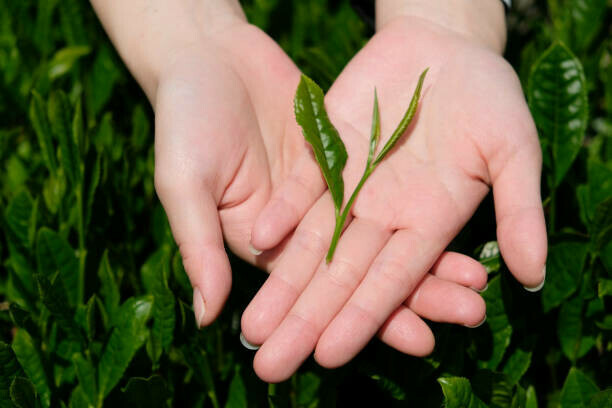
When delving into the expansive realm of tea, the differentiation between Sencha and other green tea provides an intriguing examination of their origins, flavor characteristics, and the intricate processes involved in their creation. Both belonging to the esteemed category of green tea, Sencha and its equivalents offer distinct experiences that mirror the specific cultivation and production methods.
Sencha, a crucial part of the Japanese tea ceremony, is renowned for its lively green hue and refreshing, grassy flavor. Its roots are deeply embedded in Japanese tradition, which focuses on simple, natural flavors that showcase the purity of the tea leaves. Sencha is typically cultivated in direct sunlight, unlike other green teas, which may be shielded during growth. This exposure contributes to its unique flavor and higher levels of catechins, which are antioxidants recognized for their health-promoting properties. In contrast, other green teas, such as Gyokuro or Matcha, often undergo shading, which enhances their sweetness and savory characteristics by increasing chlorophyll and reducing catechin levels.
The discussion surrounding shaded versus unshaded Sencha offers compelling insights into how sunlight exposure influences flavor and quality. Shaded Sencha, often known as Kabusecha, is covered briefly before harvesting. This shading results in a more complex, nuanced flavor profile with a distinct savory taste, making it a highly valued variety among tea enthusiasts. On the other hand, unshaded Sencha maintains a more intense, astringent flavor, reflecting the unaltered impact of direct sunlight. This disparity emphasizes the delicate equilibrium that tea masters achieve to produce diverse taste experiences within the Sencha category.
The harvesting and processing process further distinguishes Sencha from other green teas. The timing of the harvest is critical; the initial picking, known as Shincha, is particularly sought after for its tender leaves and exceptional flavor. Once harvested, Sencha leaves are promptly steamed to halt oxidation, preserving their green color and fresh flavor. This approach differs from other green teas, which may be pan-fired or baked. The steaming technique used for Sencha not only upholds its vibrant appearance but also preserves delicate flavors and beneficial properties.
In conclusion, examining Sencha versus other green teas uncovers a realm of subtle distinctions and sophisticated techniques. From the impact of shading to the meticulous harvesting and processing methods, each stage contributes to the exceptional qualities that distinguish Sencha as a prominent member of the green tea family. Whether one prefers the robust, astringent notes of unshaded Sencha or its shaded counterpart’s rich, savory flavor, exploring these teas provides a gratifying and enlightening journey.
Health Benefits and Nutritional Showdown
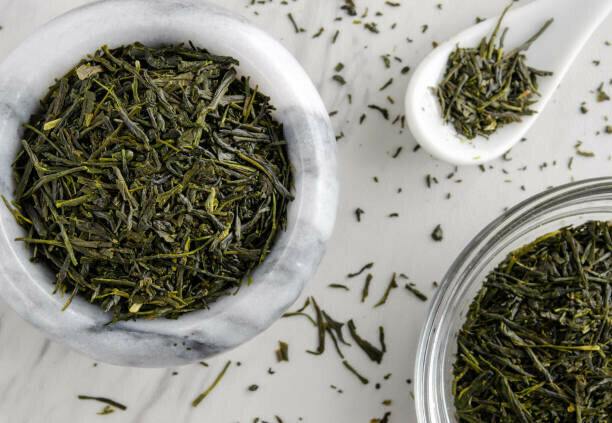
Selecting a tea that pleases your taste buds and enhances your health requires understanding the health benefits and nutritional content of Sencha, Matcha, and green tea. Each of these teas has advantages, making them popular choices among health enthusiasts worldwide.
Sencha tea, which is a staple in Japanese culture, is well-known for its high levels of antioxidants. Potent compounds like catechins, which are antioxidants, combat oxidative stress and inflammation in the body. Regular consumption of Sencha can help improve cardiovascular health, boost metabolism, and even prevent cancer. Additionally, vitamin C in Sencha supports the immune system, while its natural caffeine content provides a gentle energy boost without the typical jitters associated with coffee.
Matcha, another standout in the green tea family, is renowned for its concentrated nutritional content. Unlike Sencha, Matcha is made from shade-grown leaves ground into a fine powder. This process preserves all the nutrients and makes Matcha a powerhouse of vitamins, minerals, and antioxidants. Matcha is particularly rich in L-theanine, an amino acid that promotes relaxation and enhances mental clarity. The balanced energy boost from the combination of L-theanine and caffeine in Matcha makes it an excellent option for individuals looking for focus and calm.
Comparing Sencha and Matcha with general green tea varieties highlights their unique health benefits. While all green teas are beneficial, Sencha and Matcha’s specific growing and processing methods amplify their health-boosting properties. In its various forms, green tea is known for aiding digestion, supporting weight loss, and improving skin health due to its high polyphenols and antioxidants.
Both green tea and Sencha offer valuable benefits for mental health, particularly in combating depression. Research indicates that consistent intake of green tea may reduce the likelihood of depression because of its anti-inflammatory properties and the existence of L-theanine, which has a soothing impact on the brain. Sencha, with its higher concentration of catechins and vitamin C, also supports mental well-being by reducing stress and promoting relaxation.
The nutritional content of Sencha and green tea uncovers the secret to their health benefits. Sencha is abundant in vitamins C and E, catechins, and minerals like potassium and calcium. While rich in catechins, green tea differs in its nutrient content depending on the type and processing method. Both teas are low in calories and provide a hydrating, refreshing beverage that supports overall health.
Incorporating these teas into your everyday schedule can offer many health advantages, whether you choose Sencha, Matcha, or another variety of green tea. Their distinct nutritional compositions and potent antioxidants make them excellent choices for enhancing physical and mental health.
Sensory Evaluation: Comparing Color, Taste, and Texture
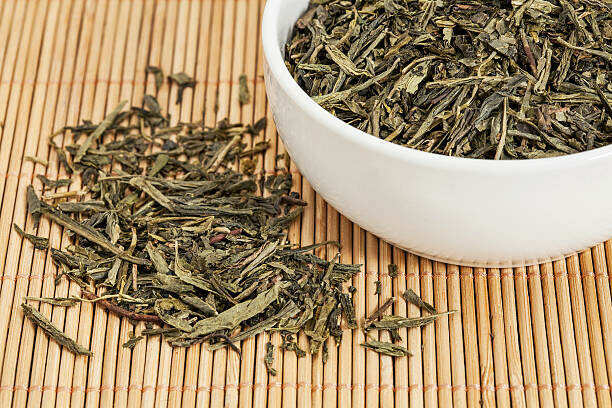
Embarking on a sensory journey through the world of tea offers a captivating experience, especially when comparing the unique attributes of Sencha and green tea. From the first glance to the final sip, these teas reveal their distinct characteristics through color, taste, and texture, inviting tea enthusiasts to savor every moment.
Sencha tea, a beloved staple in Japanese tea culture, immediately captures attention with its vibrant green hue. This striking color is a testament to the careful cultivation and steaming process that preserves the tea leaves’ natural pigments. Sencha releases a fresh, grassy aroma upon brewing that hints at the flavor journey ahead. The first sip of Sencha is often described as a love affair with nature itself, offering a delicate balance of sweetness and a slight astringency. This harmonious blend of flavors is complemented by a smooth, almost silky texture that coats the palate, leaving a lingering, refreshing aftertaste.
In its many forms, green tea also presents a spectrum of sensory delights. While the color can vary from light green to a deeper, almost yellow-green shade, the essence of green tea remains consistent: a dependable, everyday hero with a loyal following. Green tea tastes typically milder than Sencha, with a gentle, soothing, refreshing, and gentle, vegetal flavor. The texture of green tea is often lighter, providing a crisp and clean mouthfeel that makes it an ideal choice for daily consumption.
Comparing Sencha and green tea’s texture, taste, and color highlights the subtle nuances that make each variety unique. Sencha’s vibrant color and robust flavor profile contrast traditional green teas’ more subdued appearance and gentle taste. This comparative study showcases how different cultivation and processing methods can influence the sensory attributes of tea, creating a diverse range of experiences for tea lovers.
In summary, the sensory evaluation of Sencha and green tea reveals a rich tapestry of colors, tastes, and textures that each offers. Sencha, with its bold green color, fresh aroma, and balanced flavor, provides an immersive tea experience that captivates from the first sip. Meanwhile, green tea’s mild, vegetal notes and light texture make it a reliable companion for daily enjoyment. Together, these teas exemplify the artistry and diversity of tea cultivation, inviting enthusiasts to explore and appreciate the subtle differences that make each cup a unique delight.
Diverse Tea Varieties: Exploring Bancha, Genmaicha, and More
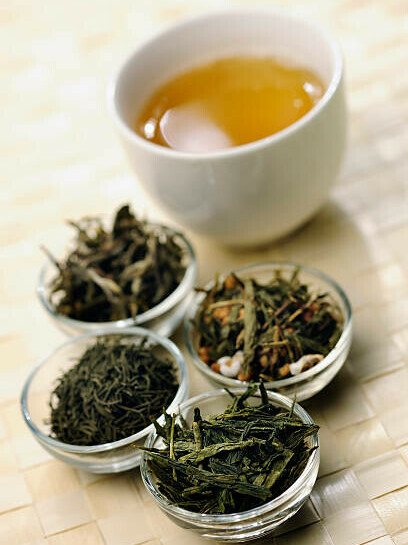
Exploring the diverse realm of Japanese tea unveils a variety of distinct types, each with unique traits and deep-rooted customs. Bancha, Genmaicha, Kukicha, Gyokuro, and Matcha are particularly notable, offering tea enthusiasts a wide range of flavors and scents to explore, each different from Sencha and regular green tea.
Bancha, a widely enjoyed everyday tea, is harvested later in the season than Sencha, resulting in larger, coarser leaves. This delayed harvest gives Bancha a gentler, less harsh taste, making it a mild introduction to Japanese teas. Its understated, toasty flavor and low caffeine content make it an ideal choice for an evening cup.
Genmaicha is a beautiful combination of green tea and roasted brown rice that offers a unique taste experience by merging the vegetal undertones of green tea with the nutty, popcorn-like fragrance of toasted rice. This blend adds a comforting warmth and an exceptional depth of flavor, making Genmaicha a favorite among those seeking a heartier tea experience.
The tea plant’s stems and twigs are utilized in making Kukicha, also called twig tea. Its light, creamy taste, and slightly sweet undertones distinguish it from leaf-based teas. The unique processing of Kukicha, which involves steaming, drying, and blending the stems with a small number of leaves, results in a refreshing and full-bodied tea.
Gyokuro, often regarded as the pinnacle of Japanese green tea, is cultivated with meticulous care. The tea bushes are shaded for a couple of weeks before being harvested. This process boosts the chlorophyll content, resulting in Gyokuro’s intense green hue and savory, rich flavor. This shading process also increases the amino acids, resulting in a sweeter, more complex taste that lingers on the palate.
Matcha, the finely ground powder of shade-grown tea leaves, stands out for its vibrant green color, intense flavor, and creamy texture.
Preparing Matcha sets it apart from other teas as it entails ingesting the whole leaf rather than steeping and discarding it. This method yields potent antioxidants, vitamins, and minerals.
These Japanese tea varieties’ unique harvesting and processing methods significantly influence their flavor and aroma. The timing of the harvest, the extent of shading, and the specific processing techniques all contribute to the distinct characteristics of the teas. Shading practices, for instance, heighten the umami and sweetness in teas like Gyokuro and Matcha, while roasting methods add a toasty note to Genmaicha and Bancha.
Understanding these diverse cultivation practices enables tea enthusiasts to value the broad range of flavors and aromas present in Japanese teas. Each variety offers a unique sensory experience, reflecting the precise care and tradition that define Japanese tea culture. From the creamy sweetness of Kukicha to the rich umami of Gyokuro, these teas beckon you to explore and relish the intricate world of Japanese tea.
The Final Verdict about Sencha vs Green Tea
As tea fans venture into the delightful adventure of comparing Sencha with green tea, it becomes clear that each sip holds many distinctions. Sencha, characterized by its lively green color and crisp, grassy taste, emerges as a cornerstone of Japanese tea culture. Meanwhile, the broader category of green tea encompasses a variety of flavors and preparations, each possessing its unique allure.
The allure of Sencha lies in its bright, slightly puckering flavor, delivering a revitalizing and energizing sensation. This flavor profile results from its exposure to direct sunlight and meticulous steaming process, which preserves the innate essence of the tea leaves. In contrast, other green teas, whether shaded like Gyokuro or blended like Genmaicha, present a range of flavors from sweet and savory to nutty and toasty. This diversity enables green tea to cater to diverse tastes and preferences, making it a versatile choice for any tea enthusiast.
Proper storage is crucial when it comes to preserving the quality of your Sencha and green tea. Remember to preserve the freshness and flavor of your tea, it’s essential to store it in an airtight container away from light, moisture, and strong odors. Keep the container in an excellent, dark location, such as a pantry or cupboard.
If you don’t consume tea frequently, store it in the refrigerator to prolong its shelf life. However, ensure the container is tightly sealed to prevent the tea from absorbing any unwanted aromas.
As you relish each cup, remember that the perfect tea experience is not just about the taste but also about the moment of tranquility it brings. Whether you prefer Sencha’s distinctive, grassy notes or other green teas’ diverse flavors, taking the time to prepare and savor your tea attentively can elevate a simple beverage into a calming ritual. Brew your tea at the appropriate temperature – generally around 75-80°C (167-176°F) for Sencha and slightly higher for other green teas – to extract the best flavors without bitterness.
In conclusion, the choice between Sencha and green tea ultimately depends on personal preference and your desired experience. Sencha presents a pure, refreshing flavor that encapsulates the essence of Japanese tea culture, while the variety of green tea offers many flavors to discover. By storing your tea correctly and brewing it carefully, you can ensure every sip is a moment of pleasure and relaxation. Now, treat yourself to the perfect cup of tea, allowing its warmth and flavor to infuse tranquility into your day.
I would love to receive your comments down below, in case of any.

